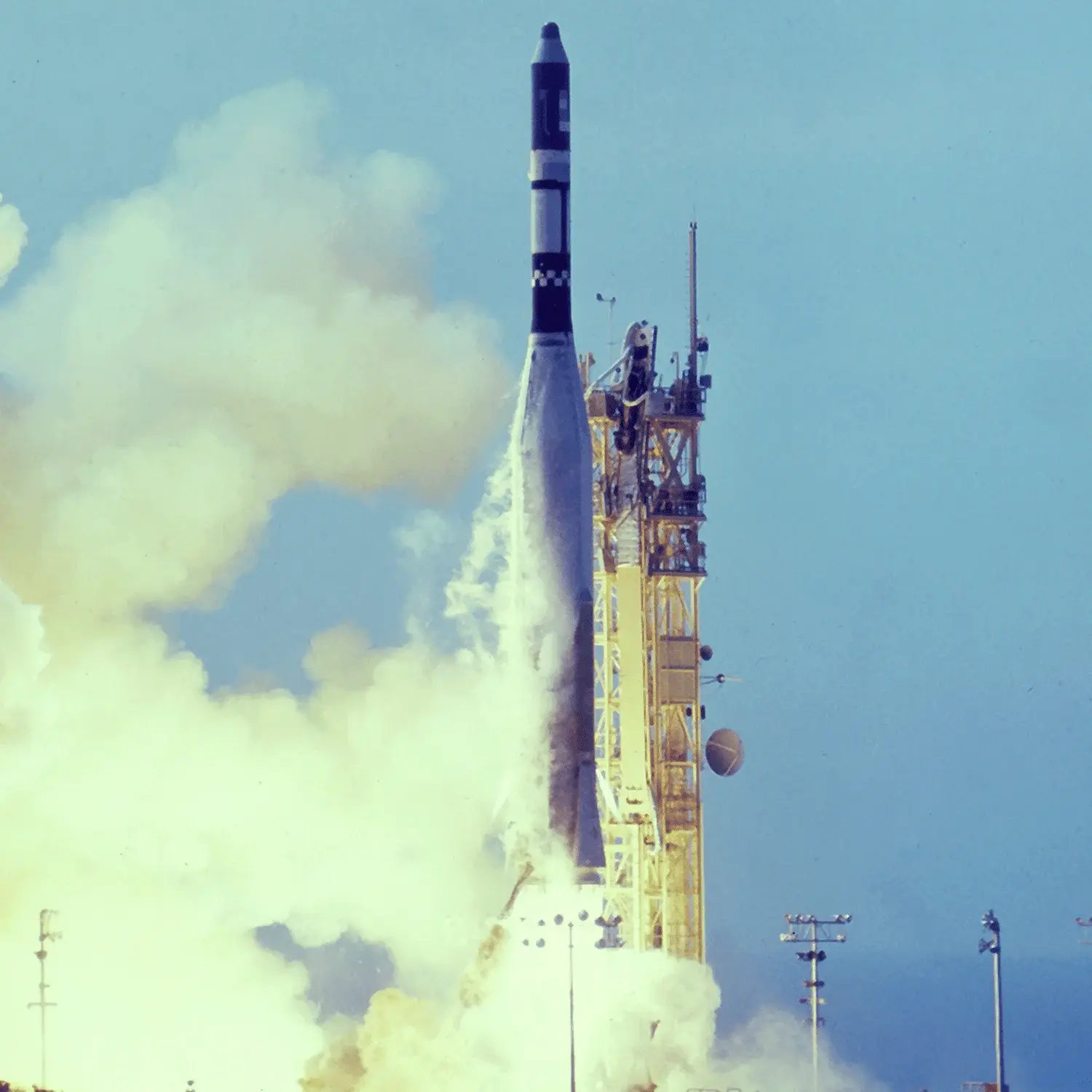Vela 3A/3B, ERS-17
Launch Success
Liftoff Time (GMT)
08:27:00
Tuesday July 20, 1965
Watch Replay
Official Livestream
Mission Details
Launch Notes
One vernier engine failed to start, slightly low orbit did not preclude successful completion of the mission.
Vela 3A/3B
Vela was the name of a group of satellites developed as the Vela Hotel element of Project Vela by the United States to detect nuclear detonations to monitor compliance with the 1963 Partial Test Ban Treaty by the Soviet Union.
Highly Elliptical Orbit
2 Payloads
300 kilograms
ERS-17
Environmental Research Satellites (ERS) 17 & 18, part of the Octahedral Research Satellite Mark III series, were designed to provide complete monitoring of radiation in space and to study the radiation background problems associated with the nuclear test detection devices on the Vela Satellite Program. ERS 17/18 were developed to measure ionizing radiation throughout the magnetosphere up to the altitudes of the Vela satellites. ERS 17 was launched into a highly elliptical orbit along with the Vela 3A and 3B satellites. The initial apogee altitude was 112,200 km and the perigee altitude was 192 km, which resulted in an orbital period of 43 hours. The orbital plane was inclined about 58° southward from the ecliptic plane and about 80° from the earth-sun line. The initial satellite spin rate was 6 RPM and inclined about 30° from the earth-sun line. ERS 17 returned data for about 3.5 months when a premature termination of the one-year end-of-life timer on November 3, 1965.
Highly Elliptical Orbit
1 Payload
6 kilograms
Rocket

Launch Site
Stats
Atlas-Agena
58th
Mission
10th
Mission of 1965
1965
66th
Orbital launch attempt
